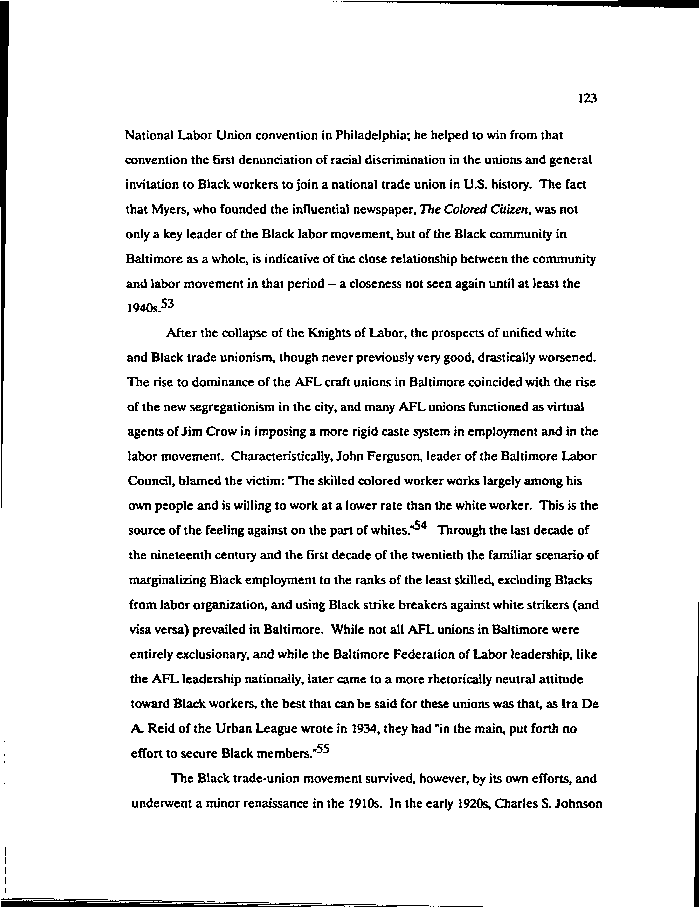|
123
National Labor Union convention in Philadelphia; he helped to win from that
convention the first denunciation of racial discrimination in the unions and general
invitation to Black workers to join a national trade union in U.S. history. The fact
that Myers, who founded the influential newspaper, The Colored Citizen, was not
only a key leader of the Black labor movement, but of the Black community in
Baltimore as a whole, is indicative of the close relationship between the community
and labor movement in that period - a closeness not seen again until at least the
1940s.53
After the collapse of the Knights of Labor, the prospects of unified white
and Black trade unionism, though never previously very good, drastically worsened.
The rise to dominance of the AFL craft unions in Baltimore coincided with the rise
of the new segregationism in the city, and many AFL unions functioned as virtual
agents of Jim Crow in imposing a more rigid caste system in employment and in the
labor movement. Characteristically, John Ferguson, leader of the Baltimore Labor
Council, blamed the victim: The skilled colored worker works largely among his
own people and is willing to work at a lower rate than the white worker. This is the
source of the feeling against on the pan of whites. Through the last decade of
the nineteenth century and the first decade of the twentieth the familiar scenario of
marginalizing Black employment to the ranks of the least skilled, excluding Blacks
from labor organization, and using Black strike breakers against white strikers (and
visa versa) prevailed in Baltimore. While not all AFL unions in Baltimore were
entirely exclusionary, and while the Baltimore Federation of Labor leadership, like
the AFL leadership nationally, later came to a more rhetorically neutral attitude
toward Black workers, the best that can be said for these unions was that, as Ira De
A. Reid of the Urban League wrote in 1934, they had "in the main, put forth no
effort to secure Black members.""
The Black trade-union movement survived, however, by its own efforts, and
underwent a minor renaissance in the 1910s. In the early 1920s, Charles S. Johnson
|

